Gas stoves are the norm in most households. It is what most homemakers like me have grown up with and feel comfortable using. But as technology advances, new appliances such as induction stoves are making their way into our kitchens.
Personally, I was skeptical before making the switch from gas stove to an induction cooktop. But with time, the benefits of induction cooktops became apparent to me while working in restaurants as a chef.
The sleek appearance, better efficiency, and safety make the induction stoves stand out in my kitchen compared to my gas stoves. However, each homemaker has varying needs, which should be considered before making a choice.
If you are also planning to buy a new cooktop or are wondering which one’s better, then this thorough comparison will help you understand better. LET’S EXPLORE!
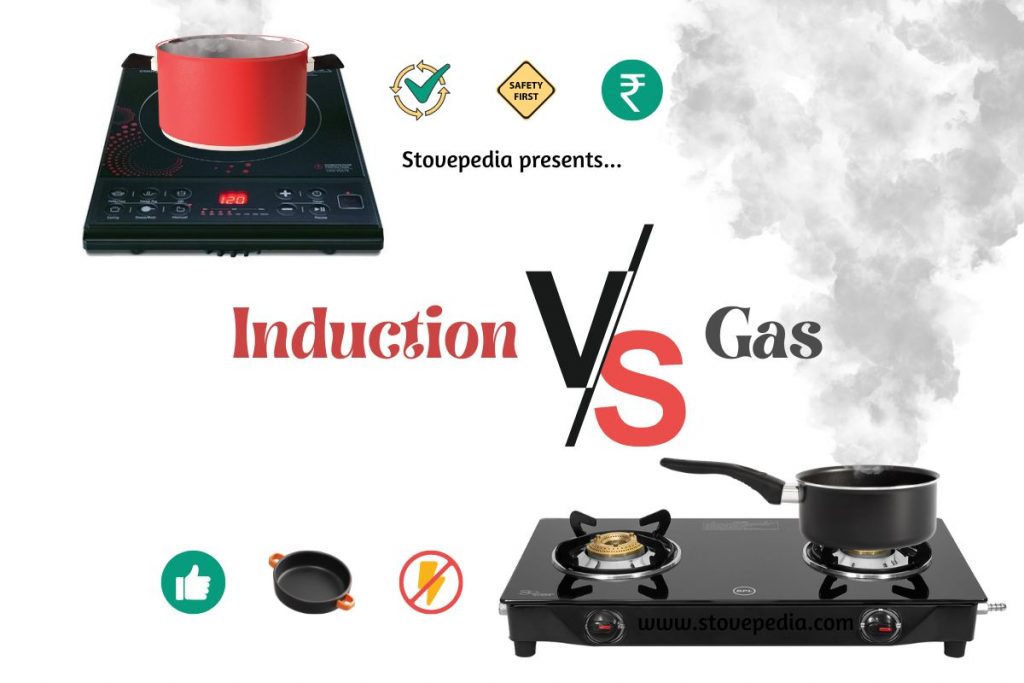
Induction Vs Gas Stove Comparison
| Point of Difference | Induction Stove | Gas Stove |
|---|---|---|
| Appearance | Sleek, Stylish, and Modern. | Bulkier but modern kitchen hobs have a sleek design. |
| Working method | Works through electromagnetic induction, generating heat in the cookware by creating a magnetic field. | Works through radiation and conduction, transferring heat from the flame to the utensil |
| Space Requirement & Portability | Induction stoves are lightweight, compact, easily portable with a little requirement of space. | Gas stoves require more space to accommodate both the gas stove and the cylinder and are not easily portable. |
| Installation Complexity | Easy installation as induction stoves are plug-and-use kitchen appliances. | Professional installation service are required to put up the gas lines and ensure no leakage. |
| Cookware Compatibility | Requires special cookware containing iron or other ferromagnetic material. Induction stoves don’t work with aluminum, copper, ceramic, or glass. | Any cookware works as long as it can be heated using a flame |
| Advanced Features | Induction stoves have a vast number of choices in features such as power boost mode, cooking modes, and temperature control. | A limited number of options with the latest models containing auto-ignition and vertical flame features. |
| Safety | Safer as induction doesn’t heat the surface and has dedicated safety features. | Potentially unsafe as the flame can cause burns, and lack of attention can cause gas leakage. |
| Energy Efficiency | Very little heat loss to the surroundings as there is no transfer of heat, upto 90% efficient. | More scope for heat loss as the flame dissipates heat everywhere, nearly 40-60% efficient. |
| Ease of Use | Inductions can be complex to learn and adjust initially due to more features but is quicker to work with once learned. | Gas stoves have an easy learning curve with limited features. |
| Cleaning and Maintenance | Easy to clean as it has smooth surfaces but must be used carefully. | Slightly difficult to clean with the knobs and burners but no special care required |
| Environmental Impact | Better for the environment as it has no emission of harmful gasses without combustion. | High environmental impact due to emission of methane, carbon di oxide, carbon monoxide, and other greenhouse gasses. |
| Price | A single element induction cooktop costs anywhere between ₹1600 – ₹10000. | A 3-burner gas stove costs around ₹2000-₹36000. While 2-burner gas stoves are cheaper, 4-burner gas stoves are even costlier. |
| Recurring Cost | Low cost of usage due to affordable electricity tariff, higher efficiency, and faster cooking time. | Higher cost due to rise in LPG prices, low efficiency, and slow cooking. |
How Different Is Induction Cooktop From Gas Stove?
1. In Terms of Appearance
Induction cooktops and hobs have a sleek look and are more suited to the modern kitchens. They don’t have a burner, meaning the top is flat and polished. Usually, the stovetop is made of glass and have circles demarking where to place the utensils. The buttons that control the device are also built-in, giving it a sleek appearance.
In comparison, gas stoves and hobs are bulkier and don’t blend easily with modern kitchen designs. Most gas stoves have a steel body with two to three knobs to control the gas input. In terms of appearance, glass-top gas stoves are better compared to stainless steel gas stoves.
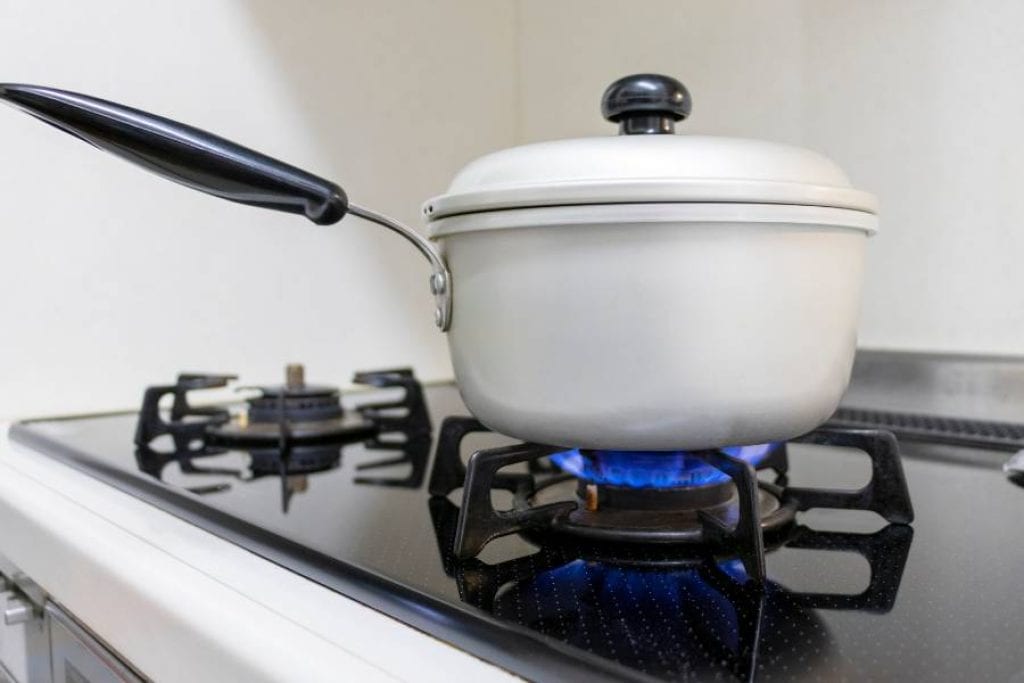
2. By Working Method
Unlike any other types of stoves, an induction cooker generates heat directly in the utensils through electromagnetic induction. It has an inbuilt copper coil which use electricity to create a magnetic field. This magnetic field reacts with the ferromagnetic metal of the cookware to generate heat and facilitate cooking. That’s why the cooktop doesn’t require any flame or conductor to transfer heat.
However, a gas stove works by burning fossil fuel (LPG, PNG, CNG, etc.) to produce flame through the burners. Each burner has a knob to control the flow of gas, which is the only way to increase or reduce the temperature. The heat flows through convection and then through conduction which aids in cooking.
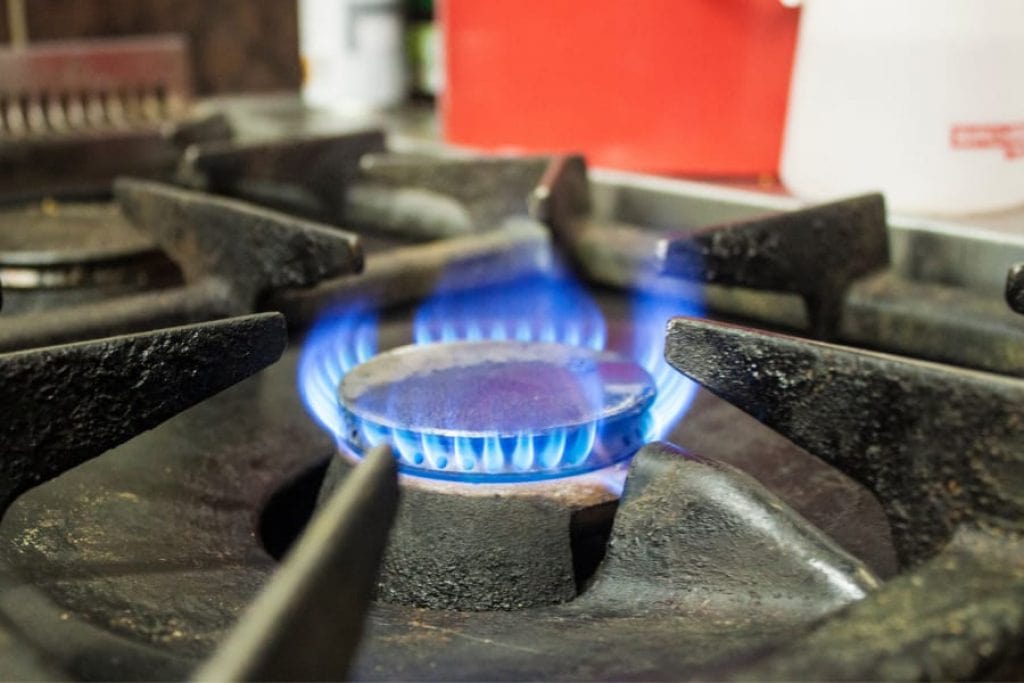
3. As Per Space Requirement and Portability
Induction cooktops don’t require any fuel or other setups except an electricity connection. The only space needed to keep an induction stovetop is the size of the stove itself. And most people usually buy single induction stoves, which take up very little space.
But remember to place it close to a power outlet as it requires electricity. These stoves are also not very heavy and only have an electric cord attached, so you can easily move them from one place to another.
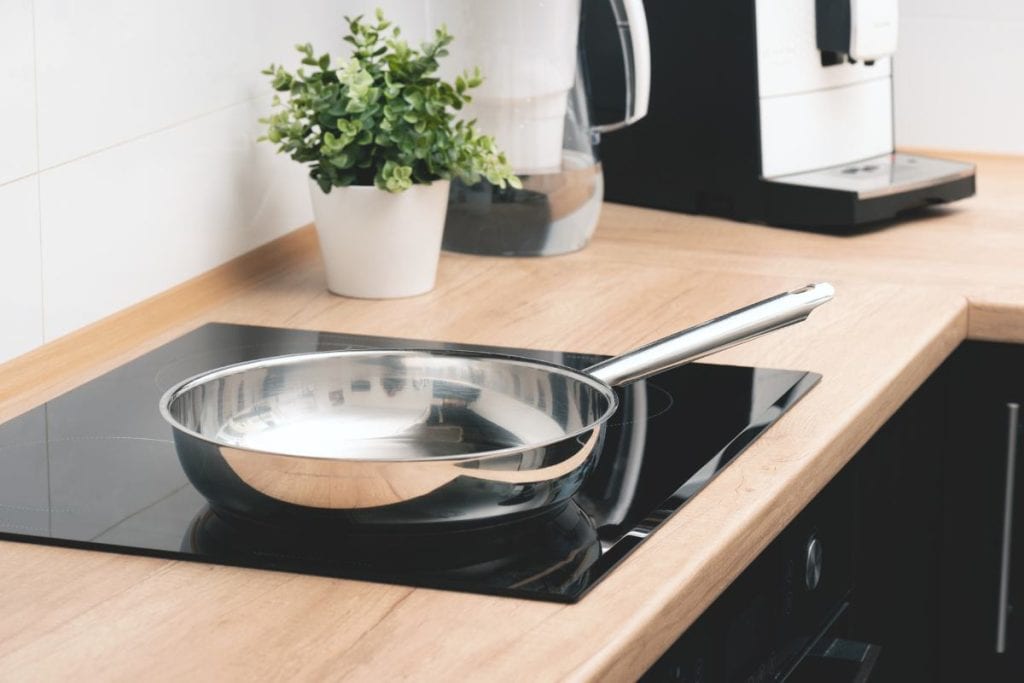
But the same is not true for gas stoves. They are bulky and usually have double or triple burners. In addition to that, they require an gas cylinder with pipe connection to the stove to function. The cylinder takes up considerable space even if the stove is small. This arrangement isn’t very flexible, which limits the portability of the gas stove.
4. The Installation Complexity
The complexity in installation depends on what you had in the house before. Usually, induction stoves don’t have complicated installation processes. But if you have always used a gas cooktop, then getting another gas stove will require no professional installation.
However, if you are planning to switch from gas to induction, then it will require stronger wiring and connections. An induction cooktop functions at 220-240 V 60 Hz and requires a suitable 3-pin power outlet. You will also need to close off your gas supply in case you stop using a gas hob.
And if you are switching from induction to a gas stove, then you will require a proper place to keep the LPG cylinder. You will also need a professional to set up the gas pipelines and ensure there is no leakage.
5. By Cookware Compatibility
Induction stovetops require a ferromagnetic material, usually iron, to induce heat through the magnetic field. That’s why only certain types of cookware work on induction stovetops.
Though most cookware in the market is now induction-compatible, common choices such as pure aluminum, copper, ceramic, or glass won’t work with inductions. If you are switching to induction stove, keep in mind the investment needed to buy suitable induction cookware.
On the other hand, I have experienced almost any kind of utensils works with a gas cooktop. As long as the material can conduct heat from the flame, all cookware is compatible with gas stoves.
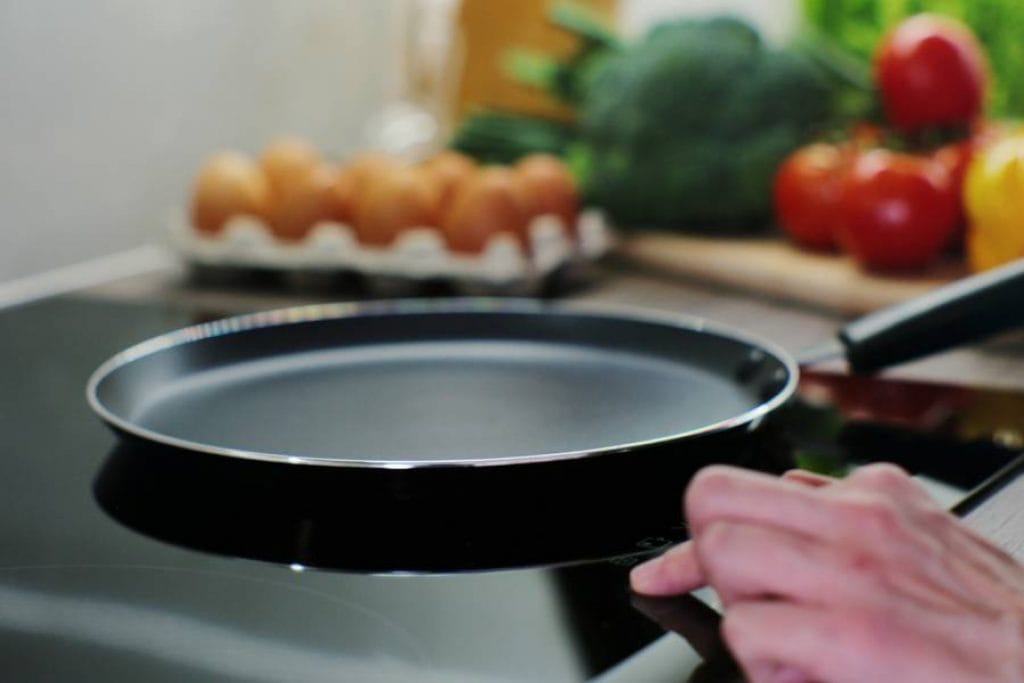
6. By Advanced Features
The modern versions of both the induction and gas stoves have more benefits. But the number of features in induction stoves outnumber those in gas cooktops. For example, induction stovetops have special cooking modes to boil milk or follow a certain cooking method.
They also offer better temperature control. Some cooktops have a “power Boost” mode that quickly increases the temperature by upto 50%.
Gas cooktops have features such as auto-ignition, vertical flames, and others. However, these are only developments of previously existing features. Since a gas stove basically works with a flame, there isn’t much scope for improvements or extra features.
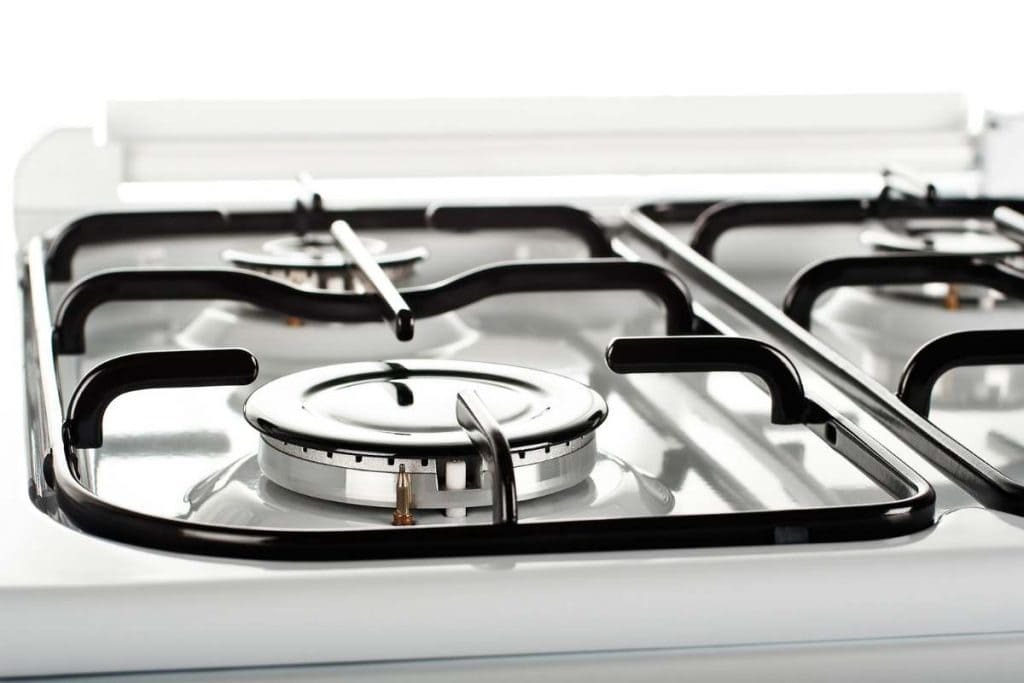
7. The Safety Aspects
Induction stoves do not generate heat but induce it. The surface of the cooktop won’t get hot by itself, which prevents any injuries in case you accidentally turn it on. Most cooktops also have dedicated safety features, such as auto turn-off when the appliance reaches a certain temperature. This makes induction stovetops a safer option, especially if you have children around.
Gas stoves have flames which can cause burns and injuries if you aren’t careful. Moreover, it can cause gas leakages if someone accidentally leaves the burner on. If you have children, owning a gas stove is risky as kids can playfully turn the knobs which can lead to problems.
8. In Terms of Energy Efficiency
Induction stoves are much more energy-efficient when compared to gas stoves. This is one of the main reasons why people switch to induction cooking. As these cooktops induce heat directly in the cookware, the heat loss is minimal. Most induction cooktops are upto 90% energy efficient. You can check induction cooktop power consumption calculator to get an estimate of your electricity bills.
On the contrary, gas stoves utilize heat transfer through a flame to the utensils. Though it isn’t noticeable, there is plenty of space between the bottom of the utensil and the flame. This causes heat to dissipate everywhere, including the surrounding air, leading to energy loss. When compared to induction cookers, gas cooktops are only about 40% efficient.
9. By Ease of Use
Induction stoves provide better temperature control, have dedicated cooking modes, and make the cooking process simpler. But the catch is they have a longer learning curve. Most homemakers who are newly introduced to induction stoves struggle with the many features it provides.
Initially, controlling the temperature and deciding the right amount of heat for different types of cooking might also be difficult. But once you get the hang of it, induction cooktops are very easy to use.
Gas stoves have a much simpler process, with only a knob to control the flame. Though there is no precise temperature setting, it is easy to turn the knob and change the size of the flame. But this is all you can do with a gas hob.
10. In Terms of Cleaning and Maintenance
Induction cookers have a smooth surface which makes them very easy to clean. There are no crevices or dents, so not much dirt can settle in. Even if you spill something, all you need to do is wipe it with a cloth, and the surface will be as clean as before.
But the part that requires maintenance in induction cooktops is the glass or ceramic surface. As they are smooth, they are also prone to scratches which don’t look very appealing.
Dust or spilled food can settle in these scratches, which makes cleaning a little difficult. But they can be avoided if you carefully handle the cookware when removing or placing it on the cooktop surface.
Gas stoves are comparatively challenging to clean with many components like burners and the knobs. As they have many grooves, food and dust particles can settle in them. Reaching all the grooves is difficult, and you may need help to clean the stove thoroughly daily.
Apart from this, gas and induction stoves require the same level of maintenance and don’t have any special advantage over one another.
11. The Environmental Impact
Gas stoves burn fossil fuels releasing methane, carbon di oxide and carbon monoxide into the atmosphere. These gasses heavily contribute to global warming and climate change. A recent research showed that the total emission of methane from gas cooktops is equal to around half a million gas-powered cars every year.
Switching to induction cooktops is not only better for the environment but also for your health. It cuts down the number of pollutants you breathe at home every day and also reduces the usage of fossil fuels. Though the traditional electricity supply is powered by burning coal, which is also a fossil fuel, you can also choose non-conventional power sources like solar, hydraulic, wind powers.
12. The Price and Affordability
A good quality gas stove costs a lot more than induction cooktops. Even a basic 3-burner gas stove from top companies starts at around ₹2000. But the cost of 2-burner and 4-burner gas stoves start around ₹1100 and ₹2800 respectively, whereas a single element induction cooktop costs as low as ₹1600. Besides, the installation involves a gas cylinder, gas pipe, and regulator, increasing the cost further. Thus, induction cooktops are more affordable than gas stoves.
13. As Per Recurring Cost
The recurring cost acquired through an induction stove is mostly from its electricity consumption. The amount of electricity consumed depends on its wattage. For example, a 2000 W induction cooktop consumes more power per hour than a 1200 W cooktop.
Consider boiling 10 liters of water on a 2000 W induction stove. You need to set the temperature to 100°C (medium flame on gas stove) and run the stove for 30 minutes. That means the cooktop is used at a wattage of 1200 W.
You can calculate the total electricity usage:
1200 x 30/60 = 600 W or 0.6kWh
If the electricity tariff is ₹10 per unit, then the total cost of boiling 10 liters of water on an induction cooktop is:
0.6 kWh x 10 = ₹6
The monthly cost will be ₹6 x 30 = ₹180
Now consider boiling the water on a gas hob. To boil 10 liters of water, You need to set the flame to medium and burn it for 30 minutes. Boiling 10 liters of water requires around 3350 kJ of energy.
1 kg of LPG has 49,000 kJ of energy.
So for 3350 kJ, you require around 0.068 kg of LPG fuel.
One LPG cylinder contains 14.2 kg of fuel and costs around ₹1000. So the cost of 0.068 kg of fuel is:
0.068 x 1000 / 14.2 = ₹4.8
For one month, ₹4.8 x 30 = ₹144
This is assuming 100% working efficiency. At first glance, it may look like using a gas cooktop costs a lot less than an induction stove. But the induction stove is 90% efficient, which means the total monthly cost will be:
₹180 x 100/90 = ₹200
Whereas, a gas stove is only 40% efficient. So, the monthly cost will be:
₹144 x 100/40 = ₹360
This means that an induction stove is more economical to use than a gas stove.
When Should You Get A Gas Stove?
It is common to see gas stoves in Indian households. And it is not just the nostalgia that makes people hold on to them. The best gas stoves also have distinct advantages over induction cookers which some people find preferable. For instance, learning and adjusting to a gas stove is much easier. This creates a comfortable cooking atmosphere, which might not be possible with an induction stovetop.
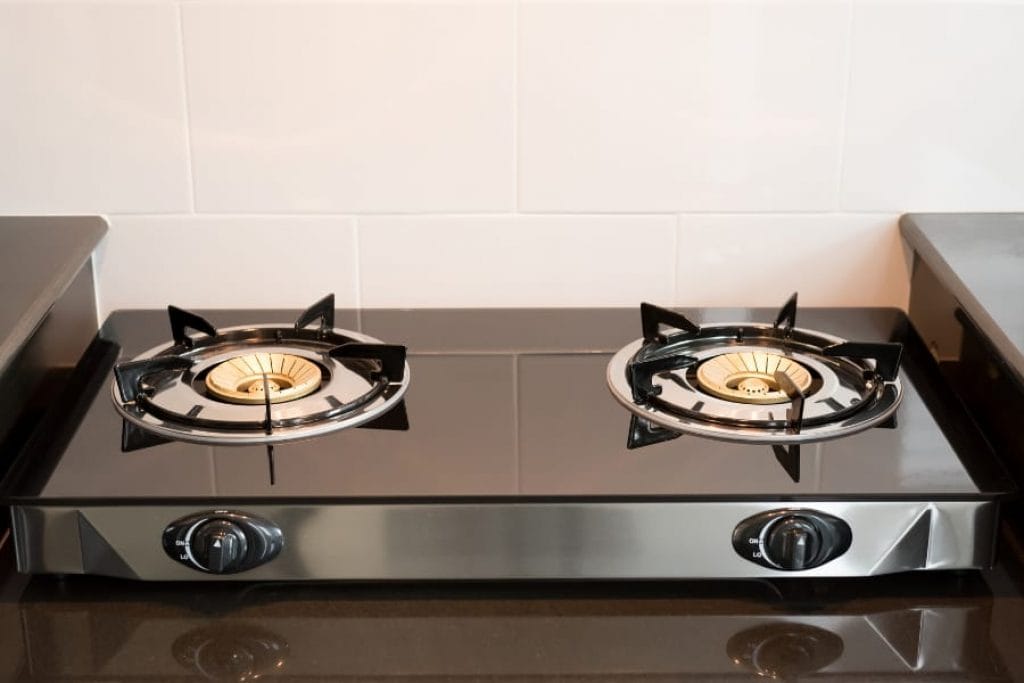
The Advantages Of Using A Gas Stove Over Induction
- Versatile Cookware: Gas stoves work with any kind of cookware. It has no restrictions on the materials and size of utensils. If you are planning to get a gas stove, you can continue using your existing cookware and don’t need to invest in new cooking sets.
- No Power Requirement: Most gas stoves work on PNG or LPG gas, which means you can conveniently use them even during a power cut. And there is little chance you will run out of fuel as most households buy cylinders in advance.
- Easier To Use: Gas stoves are simpler to use compared to inductions. There are no fancy features or complicated buttons you need to push. With the traditional knob and burner arrangement, anyone can quickly learn to use the stove.
Drawbacks Of Using A Gas Stove Over Induction Stove
- Rigorous Cleaning: The burners, nozzles and knobs of gas stoves can be difficult to clean, especially if food spills over them. Dirt and food particles accumulate in the deep grooves, which aren’t easily reachable, making the gas stove less easy to clean. Follow our gas stove cleaning guide to do it properly.
- Increasing Cost: The price of cooking gas is rising, which means the cost of cooking on a gas cooktop will also increase. Add to it the low working efficiency, and using gas stoves will soon burn a hole in your pocket.
- Safety Issues: Gas stoves pose some environmental and health issues to humans and their surroundings. Whether it is burning from the flame or gas leakage, these stoves can potentially cause problems.
- Heating the Kitchen Space: The flame from gas stoves transfers a lot of heat to the surroundings. This may increase the kitchen temperature, creating an uncomfortable cooking environment. Using fans is also not an option as it may disturb the gas flame.
When Should You Get An Induction Stove?
Induction stoves are creating a lot of hype recently. Their many benefits, including the reduced environmental impact, are increasing their popularity both in the news and among households. However, before you decide to buy an induction cooktop, it is better to be acquainted with its pros and cons.
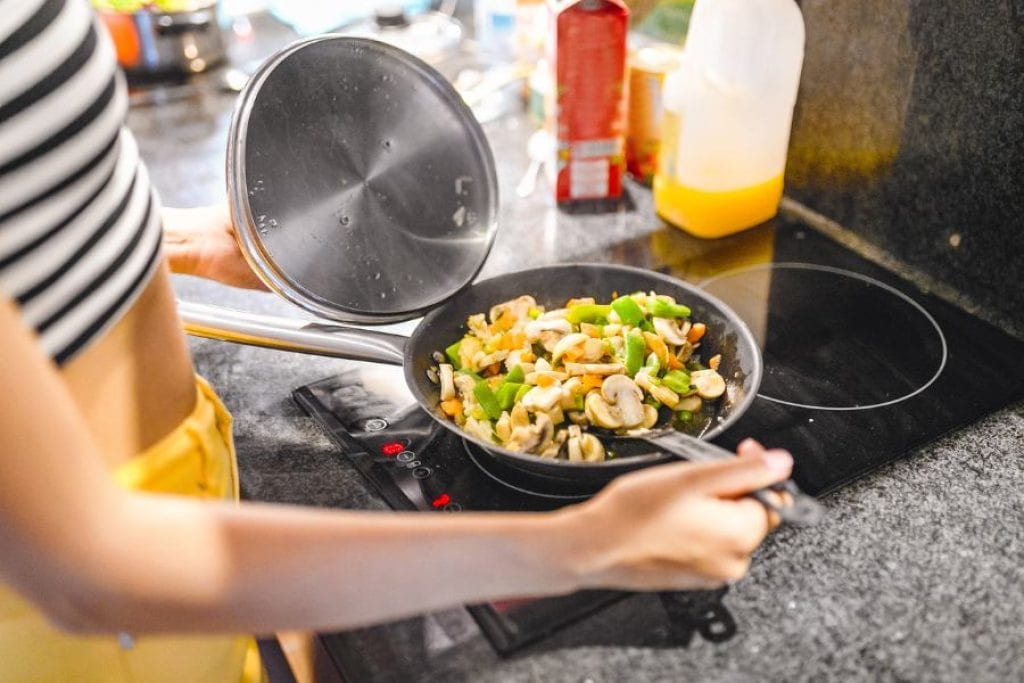
Benefits Of Using An Induction Stove Over Gas
- Higher Efficiency: Induction stoves have about 90% energy efficiency, which means there is very little wastage of heat. As the cooktop directly generates heat in the utensil, it doesn’t lose any heat to the atmosphere.
- Lower Cost: The cost of electricity is low when compared to LPG. Moreover, due to the efficiency and lower cooking time, induction cooktops cost less than gas stoves for daily usage.
- Safer Option: Induction stovetops don’t heat by themselves and only work when you place a utensil over it. Even if you accidentally leave it on, there will be no injuries due to heat. It also has several safety features, such as child lock and auto shut-off, which makes it a safer choice.
- More Eco-friendly: As induction cookers don’t burn any fuel, they don’t emit any harmful gasses into the atmosphere. It is also better for your health as you are not continuously exposed to these toxic gasses.
Disadvantages Of Using An Induction Stove Compared To Gas
- Higher Upfront Cost: Buying an induction cooktop can be costly when compared to gas. Moreover, with added features and the latest technologies, the cost can go as high as ₹8000.
- Slow Learning Curve: Some induction cookers have too many features, which can get confusing. Even the precise temperature setting takes a while to get used to. And if you are someone who prefers simple cooking methods, then most of the features may not be of any use.
- Cookware Restriction: Induction cooktops require special cookware that has a blend of magnetic materials. Cookware made of some grades of stainless steel, cast iron, etc., can only be used for induction cooking. Along with buying a cooktop, you might also need to spend on a brand-new induction cookware set that works on gas stoves too.
In Conclusion
The choice between induction and gas stoves has been up for debate. Depending on your cooking style and kitchen requirements, you can choose either an induction or gas stove. Both have distinct advantages over the other that you need to study carefully.
For example, if you need a modern appliance that reduces your cooking time, then you can go for an induction stove. But if you are looking for appliances that give you a traditional feel, then a gas stove is the way to go.
However, if you consider the budget and environmental impact, induction stoves look be more beneficial. Ultimately, you need to weigh both of your options and see which one suits you best.

